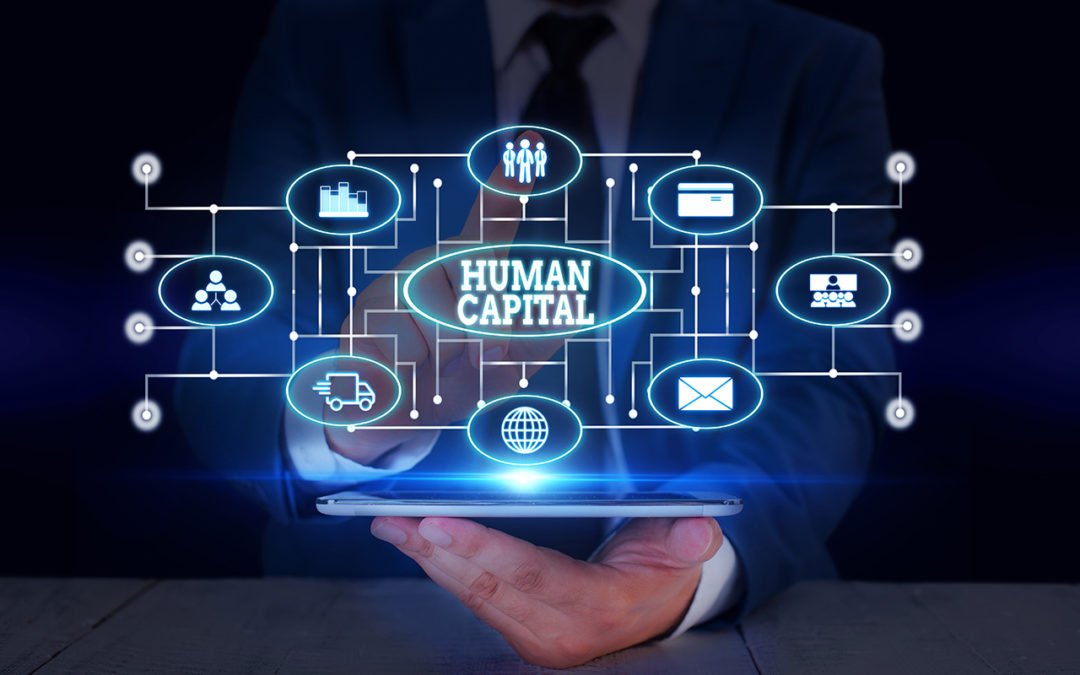Key Takeaways
- The rise of AI and automation is reshaping job roles and skill requirements.
- Flexible work arrangements are becoming essential for attracting and retaining talent.
- Continuous learning and upskilling are critical to address evolving workforce needs.
- Diversity, equity, and inclusion (DEI) initiatives are integral to modern human capital strategies.
- Data-driven decision-making enhances HR effectiveness and organizational success.
The Impact of AI and Automation on Workforce Dynamics
AI and automation are driving today’s workforce evolution. Organizations are facing rapid technological changes that are influencing job descriptions, desired skills, and leadership development needs. Companies striving to build future-proof teams are increasingly focusing on HCM strategy and systems to align people planning with business goals and technological advancements. This pivot demands a workforce proficient in both technical abilities and adaptive, human-centric skills.
Research highlights that the demand for AI-complementary skills, especially digital literacy and collaboration, continues to surge. As automation streamlines repetitive tasks, jobs are being redefined, placing greater value on creativity, problem-solving, and emotional intelligence. Recent studies have shown that roles requiring a blend of specialized and soft skills often command higher wage premiums, especially in fields that leverage emerging technologies.
Embracing Flexible Work Arrangements
Flexibility at work is more than a perk; it’s a strategic pillar that enables organizations to attract and retain top talent in an age where employees demand options. The rise of remote and hybrid work models has decentralized the traditional workplace, providing opportunities for organizations to diversify their talent pipeline. A recent industry report notes that one in 10 employees would switch jobs to achieve greater flexibility in their work arrangements, underscoring its critical role in sustaining employee loyalty and performance.
As hybrid work becomes the norm, thriving companies are building inclusive cultures that foster collaboration for both in-office and remote staff. Balancing flexibility with productivity means reshaping policies around communication, accountability, and results-driven management. Leaders must adapt quickly by engaging employees through open dialogue and ongoing feedback mechanisms, ensuring both autonomy and organizational cohesion.
Prioritizing Continuous Learning and Upskilling
The rapid advancement of digital tools and business models has placed a premium on employee learning and development. According to the World Economic Forum, by 2025, over half of the global workforce will need significant reskilling. Companies prioritizing employee development are implementing personalized learning pathways, microlearning platforms, and leadership programs to help staff meet evolving industry standards.
These programs benefit both organizations and employees by building a culture of adaptability. Continuous upskilling not only helps bridge skills gaps created by new technologies but also increases engagement and boosts retention rates. As a result, businesses develop a future-ready workforce capable of navigating uncertainty and driving innovation.
Integrating Diversity, Equity, and Inclusion (DEI) Initiatives
Integrated DEI strategies are revolutionizing how organizations source, value, and develop talent. By putting diversity, equity, and inclusion front and center, businesses are actively pursuing environments where every employee feels represented and heard. Initiatives such as employee resource groups, mentorship, and equitable hiring processes are proving effective in both improving representation and fostering belonging.
Advanced analytics now enable HR teams to track a broad array of diversity metrics, allowing them to set meaningful targets and swiftly identify gaps across departments. Through transparency and accountability, companies demonstrate their commitment to DEI, which has been shown to directly impact innovation, employee satisfaction, and financial outcomes.
Leveraging Data-Driven Decision-Making in HR
People analytics have emerged as the cornerstone of human capital management, delivering actionable insights into employee engagement, retention, and workforce planning. Modern HR teams use data not just for reporting but for ongoing scenario planning, identifying leading indicators for turnover, and customizing development initiatives.
Metrics on workforce utilization, productivity, and sentiment empower organizations to proactively address issues, rather than reacting to problems after the fact. Data-driven approaches also facilitate better alignment between business objectives and workforce needs, supporting more resilient operations in dynamic markets.
Adapting to the Evolving Role of Middle Managers
The traditional role of the middle manager is undergoing a significant transformation. As AI and automation streamline administrative duties, organizations are urging managers to shift focus from task oversight to talent development and empowerment. High-performing companies are redefining management roles to emphasize coaching, mentoring, and enabling teams to reach their full potential.
This transition requires training managers to be agile leaders who thrive in environments of continual change and ambiguity. Companies supporting this shift report improved employee engagement, reduced burnout among managers, and better overall organizational performance.
Enhancing Employee Well-being in the Age of AI
The integration of AI into HR workflows—from hiring to engagement monitoring—has clear benefits in efficiency and objectivity, but also brings challenges around transparency and employee trust. As organizational reliance on digital solutions grows, so too does the need for clear communication about AI’s impact, robust upskilling programs, and deliberate strategies to mitigate bias and foster psychological safety within teams.
Making employee well-being a central pillar means HR leaders must proactively check in with staff, provide mental health resources, and involve employees in the development and rollout of AI-based solutions. Transparency, inclusion, and empowerment are key to ensuring technology serves as a tool for growth, not a source of anxiety or disenfranchisement.
Conclusion
As workforce trends continue to accelerate and converge, organizations must recalibrate their human capital strategies to stay ahead. Embracing technology, cultivating flexible work cultures, supporting lifelong learning, championing DEI, leveraging analytics, and nurturing empathetic leaders are the foundations of a resilient, high-performing organization. Prioritizing employee well-being amidst change ensures business continuity and long-term sustainable growth.
